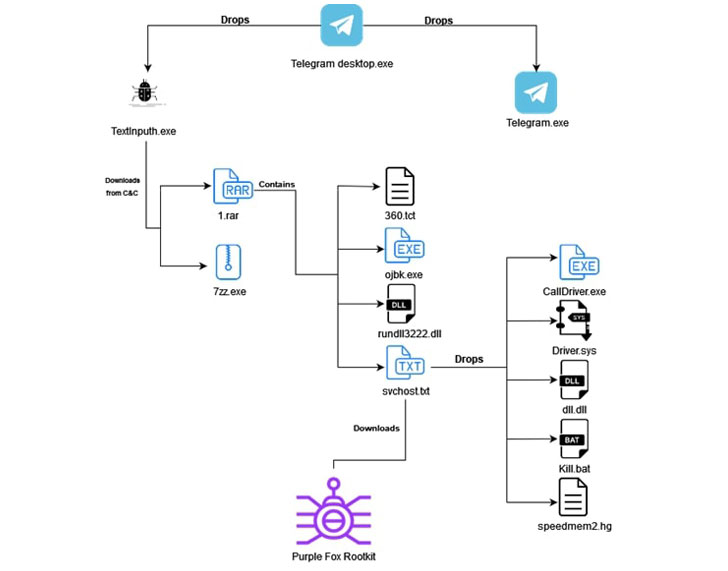Trojanized installers of the Telegram messaging application are being used to distribute the Windows-based Purple Fox backdoor on compromised systems.
That’s according to new research published by Minerva Labs, describing the attack as different from intrusions that typically take advantage of legitimate software for dropping malicious payloads.
“This threat actor was able to leave most parts of the attack under the radar by separating the attack into several small files, most of which had very low detection rates by [antivirus] engines, with the final stage leading to Purple Fox rootkit infection,” researcher Natalie Zargarov said.
First discovered in 2018, Purple Fox comes with rootkit capabilities that allow the malware to be planted beyond the reach of security solutions and evade detection. A March 2021 report from Guardicore detailed its worm-like propagation feature, enabling the backdoor to spread more rapidly.
Then in October 2021, Trend Micro researchers uncovered a .NET implant dubbed FoxSocket deployed in conjunction with Purple Fox that takes advantage of WebSockets to contact its command-and-control (C2) servers for a more secure means of establishing communications.
“The rootkit capabilities of Purple Fox make it more capable of carrying out its objectives in a stealthier manner,” the researchers noted. “They allow Purple Fox to persist on affected systems as well as deliver further payloads to affected systems.”
Last but not least, in December 2021, Trend Micro also shed light on the later stages of the Purple Fox infection chain, targeting SQL databases by inserting a malicious SQL common language runtime (CLR) module to achieve a persistent and stealthier execution and ultimately abuse the SQL servers for illicit cryptocurrency mining.
The new attack chain observed by Minerva commences with a Telegram installer file, an AutoIt script that drops a legitimate installer for the chat app and a malicious downloader called “TextInputh.exe,” the latter of which is executed to retrieve next-stage malware from the C2 server.
Subsequently, the downloaded files proceed to block processes associated with different antivirus engines, before advancing to the final stage that results in the download and execution of the Purple Fox rootkit from a now-shut down remote server.
“We found a large number of malicious installers delivering the same Purple Fox rootkit version using the same attack chain,” Zargarov said. “It seems like some were delivered via email, while others we assume were downloaded from phishing websites. The beauty of this attack is that every stage is separated to a different file which are useless without the entire file set.”



